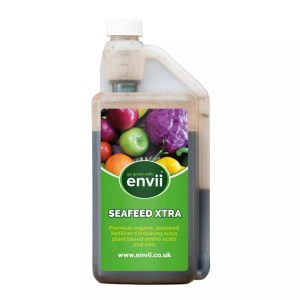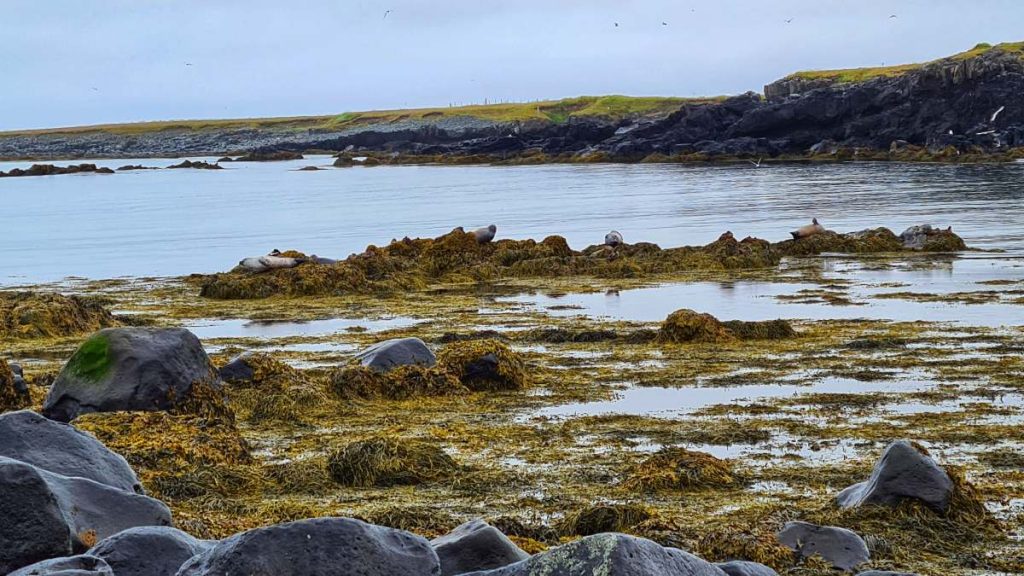Coastal growers have always known the value of seaweed as a fertiliser. Whether applied to the plot directly or composted, the soils were improved and crops grew better. A natural, organic and renewable resource, free for the collecting.
Useful as it is, if you live near the coast you can’t just head down to the shoreline at low tide and strip the seaweed to take home. You need to know who owns the land and if it’s OK to harvest. There’s a useful post on the forums about this here: Is it legal to take seaweed from our beaches here in the UK?
Regardless of the legality, harvest sensitively and sustainably.
Of course, collecting and shipping seaweed from the coast to the interior wasn’t really feasible on any large scale but in the 1950s it was realised that you could make a liquid feed supplement from the seaweed. All the extra benefits of seaweed without the difficulties of bulk transport and easier to use.
Why is Seaweed Good for Growing?
Seaweed contains high levels of biologically active growth stimulants including hormones, trace elements, complex sugars, fats and alginates which enable it to survive in the very hostile environment of the shoreline. When processed into a liquid fertiliser, these beneficial compounds are easily absorbed by plants resulting in better growth, crop yields and stress resilience.
 Envii Seafeed Xtra
Envii Seafeed Xtra
Envii Seafeed Xtra is made from Ascophyllum nodosum (AKA Norwegian kelp, knotted wrack or egg wrack). They only harvest sustainably between April and October when the bio-active compounds are at their peak levels.
The feed extract is made using a low-temperature process that ensures the beneficial long-chain molecules and hormones remain intact.
Most Seaweed fertilisers only contain between 1-3% Seaweed, Seafeed Xtra contains 5%. Envii also add an additional nutrient that helps deliver the micro-nutrients to the plant better following application as well as adding plant-based amino acids and iron to further enhance the fertiliser.
Envii Seafeed Xtra for 10% Off in May – JUNE 2022 Use our voucher code AGTEN
Applying Seaweed Fertiliser
You can use seaweed extract fertilisers in the same way as other liquid fertilisers but it’s generally best used as a foliar feed. The plants absorb the nutrients through their leaves. I think of seaweed feed as a vitamin boost for the plants, a supplement. Incidentally, spraying upwards to coat the underside of leaves as well as the top surface is most effective. Spray early in the day or towards the end for best absorbtion.
I use a small sprayer in the potting shed and a 5 litre pump spray for larger areas like greenhouse borders. Sprayers are labelled and dedicated to seaweed feed so there is no chance of accidentality contaminating with herbicide etc.
Uses of Seaweed Fertiliser
Seedlings don’t need much in the way of fertiliser until they’ve used up the energy store in the seed so I don’t use seaweed fertiliser until they’re getting past the the cotyledon (seed leaf) stage. Once they’ve got their true leaves, then a light spray helps them get properly established.
Chitting Potatoes
A tip I was given many years ago was to give seed potatoes a light spray when the sprouts start to grow and another before planting. The growth stimulants just give that little extra boost to the plants.
 Potatoes Tuber Initiation
Potatoes Tuber Initiation
When potato plants flower it’s an indicator that the tubers are starting to form. An application of seaweed at this point is particularly helpful. It’s a stressful time of change for the plant and seaweed is brilliant for stressed plants.
Planting out Tomatoes, Cucumbers, Peppers, Aubergines.
Transplanting tomatoes, cucumbers, peppers and aubergines from the nice warm propagator or windowsill to the greenhouse or outside is a big shock for the plant. A spray a week before and just after moving them helps them recover from any transplant shock.
Planting out
Any plant, whether flower or vegetable or even a sapling, will thank you for a spray of seaweed fertiliser immediately afterwards.
Ailing plants
Sometimes you’ll notice a plant isn’t doing as well as it should. Often you can’t find a reason, it’s just ailing. A seaweed feed can sometimes save the day. Of course it doesn’t work every time but it’s well worth a try.
Drought Damage
There’s not a lot you can do in a drought with grass parched brown. Hedges and trees can lose leaves as the plants try to survive. Once the drought breaks a seaweed feed will speed up recovery.
General Use
Envii, the producers of Seafeed Xtra, suggest using it regularly as a general fertiliser. Seafeed Xtra contains a small amount of nitrogen and phosphorus which is absorbed as a foliar feed but no potassium which the plant must get from the ground.
The dilution rates are between 10ml and 15ml per 5 litres of water depending on use, so a one litre bottle of Seafeed Xtra will produce up to 500 litres of foliar feed spray. It’s also available in 5, 10 and 20 litre packs.
With thanks to Envii for their help with background information for this article.




